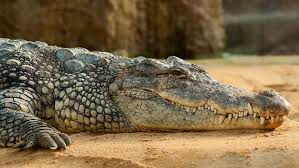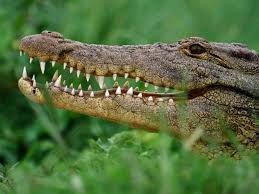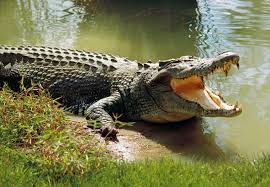The Orinoco Crocodile is a critically endangered species that inhabits the freshwater environments of the Orinoco River basin in South America. Known for its distinctive long, narrow snout and pale tan color, this reptile holds a captivating, yet precarious position within the region’s rich biodiversity. Its fascinating life history, survival challenges, and the ongoing conservation efforts dedicated to it, are a testament to nature’s resilience and mankind’s responsibility towards preserving it.
Physical Characteristics
- Height and Weight: These are the most basic physical characteristics, often used to describe a person’s general physical appearance. They play a significant role in various aspects, such as defining BMI (Body Mass Index) and determining health conditions.
- Hair and Eye color: These traits are genetically determined and are unique to every individual. They add to the diversity of human physical characteristics.
- Facial Features: This includes the shape and size of the eyes, nose, mouth, and overall face structure. These attributes are often the most recognizable aspects of an individual.
- Skin type and color: This includes whether the skin is dry, oily, or combination, and the skin color or complexion. It is an important factor in personal care, beauty, and health.
- Body Shape: This refers to the distribution of body fat and muscle, often categorized into different types like pear-shaped, apple-shaped, etc.
- Physical Fitness: This refers to the overall physical health of an individual, which includes strength, flexibility, endurance, and cardiovascular health.
Size and Evolution
- Size: The size of an organism or a species is a fundamental biological property that can greatly impact its way of life. Factors such as genetic makeup, environmental conditions, and resource availability can influence the size of an individual or a species.
- Evolution: Evolution is a process that leads to changes in the inherited traits of a population over successive generations. These changes occur due to the interaction of four primary mechanisms: mutation, gene flow, genetic drift, and natural selection.
- Size and Evolution: The size of organisms can evolve over time in response to environmental changes. For instance, a process known as ‘insular dwarfism’ may cause species isolated on an island to evolve towards smaller sizes, due to limited food resources and absence of predators.
- Impacts on Survival: The size and evolutionary adaptations of a species can directly impact its survival and reproduction. For instance, larger sizes can be beneficial for survival in harsh environmental conditions, whereas smaller sizes can be advantageous in resource-limited settings.
- Role of Humans: Human interventions, such as selective breeding and habitat modifications, can influence the size and evolution of species. This can lead to the development of new breeds or varieties, or even the extinction of certain species.
Behavioral Insights
- Influence of social norms: Behavioral insights reveal that people tend to conform to what they perceive as the norm. This can be leveraged in framing policies or encouraging particular behaviors.
- Loss aversion: People typically fear loss more than they value gain. This principle can be applied to motivate action by emphasizing potential losses rather than benefits.
- Choice architecture: The way choices are presented can significantly impact decision-making. By carefully structuring the presentation of options, behavior can be subtly guided towards desired outcomes.
- Habit formation: Behaviors that are consistently repeated often become habitual. Therefore, creating supportive environments that encourage positive habits can lead to long-term behavior change.
- Anchoring effect: People tend to rely heavily on the first piece of information (the “anchor”) they encounter when making decisions. This can be used to guide perceptions and decision-making in specific directions.
- The power of defaults: People often go with the default option when making a choice. Hence, setting beneficial options as default can lead to positive outcomes.
Related Post : Spectacled Caiman: The Gentle Giants of South American Waters
Dietary Habits
- Balanced Diet: Ensure your meals are balanced with appropriate proportions of proteins, carbohydrates, and fats. Include plenty of fruits and vegetables for their vitamins, minerals, and fiber content.
- Hydration: Drinking sufficient water is critical for overall health. Aim for at least 8 glasses of water a day.
- Portion Control: Avoid overeating by practicing portion control. This helps maintain a healthy weight and prevents digestive issues.
- Regular Meals: Eating at regular intervals helps regulate your metabolism and keeps energy levels stable throughout the day.
- Limit Processed Foods: Minimize consumption of processed and fast foods, which are often high in unhealthy fats, sugars, and sodium.
- Mindful Eating: Pay attention to what and when you eat. Eat slowly, savor your food, and listen to your body’s hunger and fullness cues.
Reproductive Process
- Gametogenesis: This is the first step in the reproductive process where sex cells or gametes are produced. In males, this process is called spermatogenesis (produces sperm), and in females, it’s called oogenesis (produces eggs or ova).
- Fertilization: The process where the male gamete (sperm) merges with the female gamete (egg) to form a zygote. This usually occurs in the fallopian tubes of females.
- Implantation: The fertilized egg or zygote travels down the fallopian tube and attaches itself to the lining of the uterus, where it begins to grow.
- Gestation: During this stage, the zygote develops into an embryo and then into a fetus. This process takes around nine months in humans.
- Birth: The final stage of the reproductive process is the delivery of the newborn. After a gestation period of about nine months, the baby is born through a process called labor.
Habitat and Range
- Habitat: The habitat refers to the natural environment in which a particular species lives. This can be as broad as a desert or as specific as a type of tree in a rainforest. The habitat provides the species with the necessary resources for survival, including food, water, and shelter.
- Range: The range of a species indicates the geographical area in which it can be found. This can vary greatly between species, with some having a small, localized range and others being spread across continents. The range is often determined by the suitability of the environment, availability of resources, and the presence of predators or competitors.
Conservation Status
- Endangered: The species faces an extremely high risk of extinction in the wild in the near future due to significant declines in population or habitat size.
- Vulnerable: The species is likely to become endangered unless the circumstances threatening survival and reproduction improve, marked by a decline in population and/or a decrease in habitat size or quality.
- Near Threatened: The species is close to becoming at risk of extinction in the near future, identified by diminishing populations or habitats, but it does not currently meet the criteria for the vulnerable category.
- Least Concern: The species is widespread and abundant in the wild and does not qualify for any category of risk. However, monitoring is necessary to make sure it maintains this status.
- Data Deficient: There isn’t enough information to assess the risk category for this species. This does not necessarily imply the species is at a low risk, but that more research is needed.
- Not Evaluated: The species has not yet been evaluated against the criteria.
Conclusion
- The importance of adopting the “EN-US” language code for consistency and clarity in our documentation.
- Adherence to this standard ensures a uniform experience for our audience, especially crucial for global organizations where the user base spans multiple geographical regions.
- In situations requiring a different language code, explicit instructions must be given to override the default setting. This mechanism allows us to cater to a broader audience while maintaining the usability of our content.




